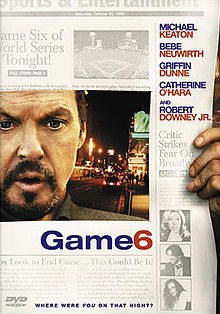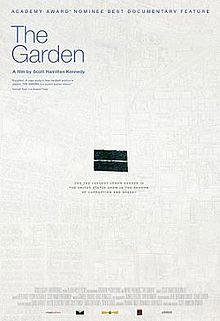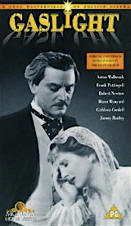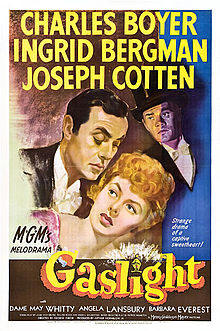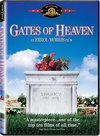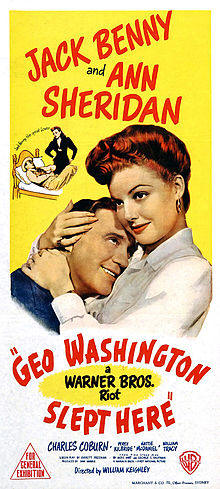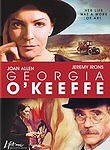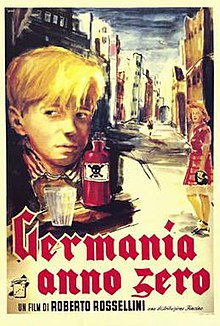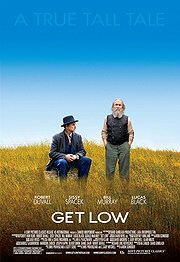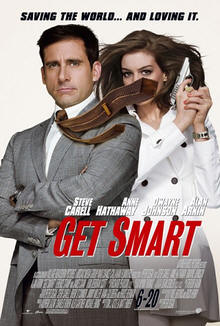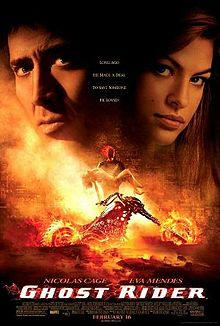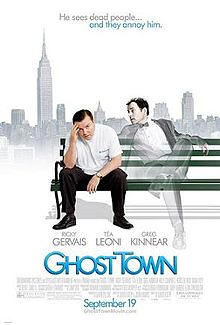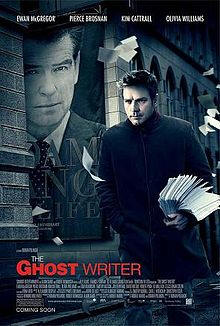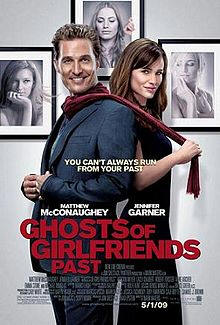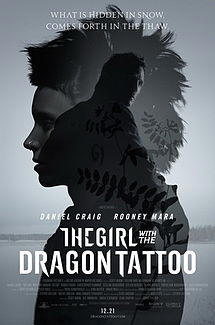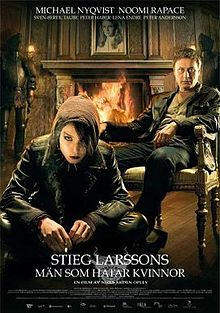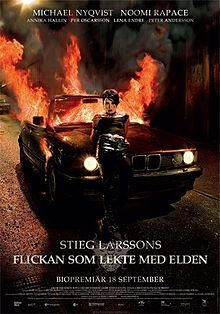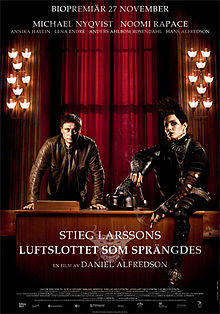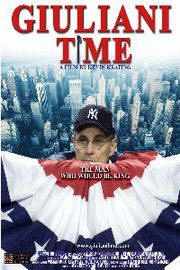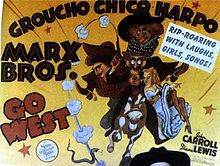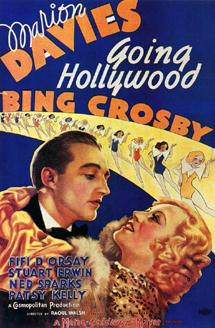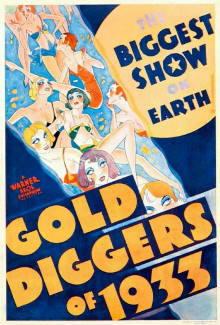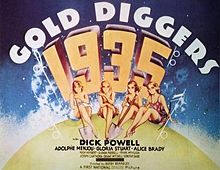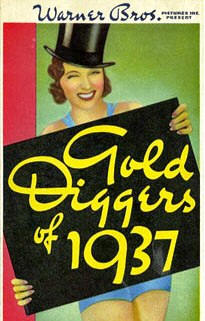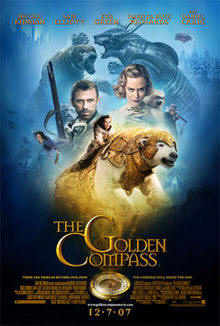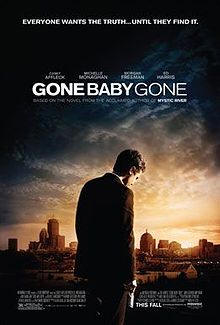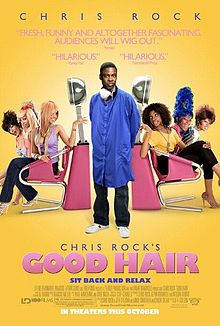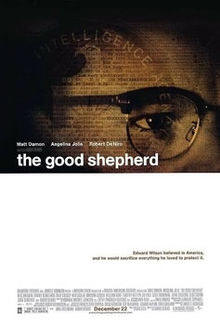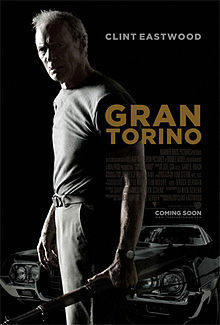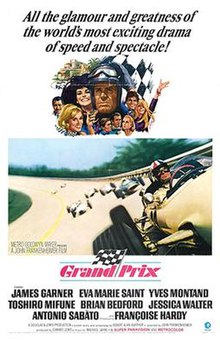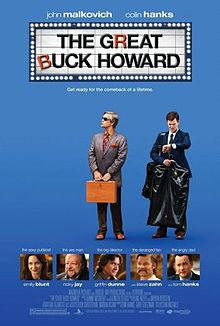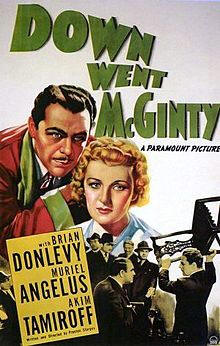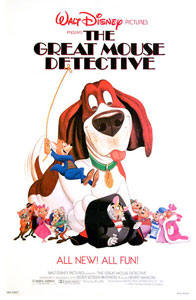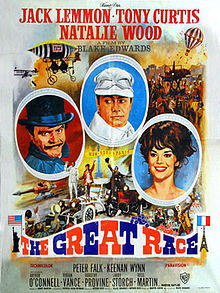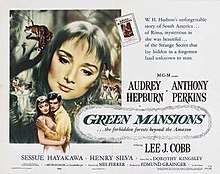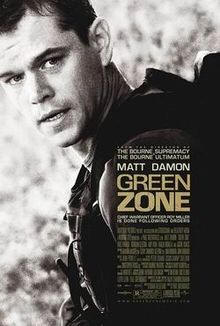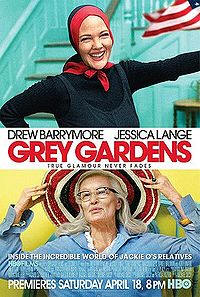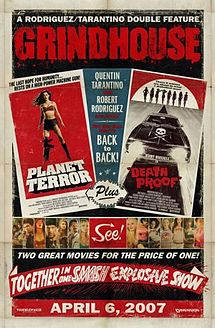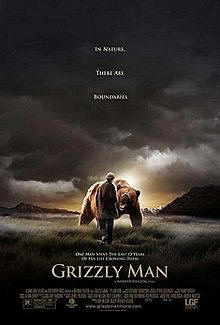|
Movies we've seen © 2004-2013 by John Varley; all rights reserved |
G
|
Galaxy Quest (1999) Here is one of my favorite … well, I was going to say little movies, but judging from the special effects it must have had a respectable budget. It is a send-up of SF TV shows in general, and of Star Trek in particular. William Shatner could probably sue for defamation, but he’s so conceited he probably thinks it’s an homage. What happens is, twenty years after their 4-year run, the five stars of a TV show are doing one more appearance in an endless convention circuit, since they can’t get jobs either from too much identification or lack of acting talent, or both. This is fine with James Nesmith (Tim Allen), who plays Captain Taggart, he just eats up the adulation. The others, not so much, particularly the Spock clone, Alexander Dane, who plays Dr. Lazarus of Tev'Meck (played by Alan Rickman, who for once brings his massive disdain to a comic part, and does very well with it). But some real aliens show up. These super-nerds have watched all the episodes and think it is real. They take the actors up to a real starship patterned on the one in the show, and ask them to help defeat the evil General Roth'h'ar Sarris, who has almost destroyed their race. Well, from there they proceed to destroy all the stupid clichés of movies and series like this. In the show, for instance, Sigourney Weaver’s character has nothing to do but repeat the things the ship’s computer says, much like Lieutenant Uhura in Star Trek … and that’s all she has to do in the real ship, too. She’s pissed. All through the movie she points out the idiocy of the situations they find themselves in, such as having to thread a deadly series of smashing steel hammers, called “The Chompers.” “What the hell is this in a ship for? Just to give us something to do!” It’s very much like a very stupid scene in The Rock, where the actors have to thread a deadly maze. I’m sure you can think of a dozen other equally stupid scenes. So it’s funny! In fact, pretty much everything in the movie works perfectly. There are good action scenes, and since it’s played for laughs, you can laugh genuinely, instead of in stupefied horror. IMDb.com Game 6 (2005) It’s October 25th, 1986. In the sixth game of the World Series, the Boston Red Sox are leading the New York Mets 3 games to 2. The score is Sox 5, Mets 4 in the bottom of the 10th inning. There are two outs and two men on base. Mookie Wilson comes to the plate for the Mets. The count is 2 and 2, and then a wild pitch scores the fifth Mets run. All tied up, 5 and 5. It’s 3 balls and 2 strikes to Mookie, so one strike, a pop fly, or an easy grounder will send the game into the 11th inning. Mookie hits an easy grounder that rolls right up the line toward first base, directly at Bill Buckner. Buckner bends over to scoop it up … and it dribbles between his legs and rolls into right field as the winning run scores. The next day the Mets win again. Boston will have to wait another 18 years for their first World Series win since 1918. That’s all the backdrop to this odd little film written by Don Delillo, whose books I’ve never read. I understand he has a sort of cult following, though it’s a large cult. The story is actually about Michael Keaton, a lifelong Red Sox fan and a playwright in New York. Rooting for the Sox has given him a pessimistic outlook on life. He spends most of his time sitting in taxis in traffic, which I understand is a Delillo trademark, seeing friends, and hopping out. His new play is opening that night, and the most hated and feared critic in New York, Robert Downey, Jr., will certainly be there, in disguise and packing heat because he fears for his life. And with good reason. I couldn’t really get into this one, though it had its moments. IMDb.comGangs of New York (2002) Beautifully composed, nicely written ... and a big yawn, as far as I was concerned. Too bad. IMDb.com The Garden (2008) Nominated for Best Documentary Feature. The 14 acres of land in the middle of one of the most desolate districts of Los Angeles has a checkered and complicated history, and I’m not sure I have it all right. But, more or less … After the Rodney King riots the owner sold it to the city, and the city allowed people—almost all of them Hispanic—to open a community garden there. Each person had just a small plot, and it was to be used to grow food for personal consumption, not re-sale. Then, a few years ago, after some politically corrupt secret deals involving a city councilwoman and a “community activist,” the property suddenly is back in the hands of the original owner. He wants to bulldoze the garden and put up warehouses. He says he’ll sell it for $15 million, an obscene profit for him, and totally undeserved. But when the farmers surprise him by raising the money, he reneges. He says he wouldn’t take $100 million now, because he hates these people. Lee called him a pigcapitalist, but I disagreed. A capitalist would have taken the money. Which means he’s just a pig. This movie documents the slime who made this all happen, and they are City Councilwoman Jan Perry (who is black) and “community activist” Juanita Tate (who is also black). I’m telling you this not out of any racism on my part, but because there is no love lost between the black community of South Central LA and the Hispanics who increasingly are outnumbering them in most neighborhoods. Any chance a black councilwoman sees to fuck up a Hispanic project will not be missed. If you doubt that these two women are slime, consider that they took $5 million dollars to build an athletic center, and after many, many years, all the money was gone and the most pitiful red-dirt soccer field you ever saw is the only result. Jan Perry is slime (and still a city councilwomen). Juanita Tate (who, I’m glad to report, is dead and currently residing in Hell) was slime. But they are small potatoes compared to the owner of the property. Some of the reviews I read didn’t even mention his name. Fear of lawsuits, I imagine. Since I am libel-lawsuit-proof (you can’t squeeze Dr. Pepper out of a turnip, nor money out of me), I will name him. He is Ralph Horowitz. That’s H as in horrible, O as in obscene, R as in ratfucker, O as in odious, W as in whoremonger, I as in invidious, T as in terrible, Z as in zoophile. (Look it up. Hint: think “ratfucker.”) It’s clear that, when he was born, Mrs. Horowitz threw out the baby, kept the afterbirth, and named it Ralph. He was then abandoned and raised by rats. This is not offered as an excuse for his behavior; he liked being raised by rats, but the rats eventually threw him out, because he smelled too bad for them and his morals fell below their standards. Ever since, he has been desecrating Los Angeles with his presence. Reading all that, you would be correct in suspecting that Mr. Horowitz eventually won the battle. The land was bulldozed, and now sits empty. The cocksucker hasn’t even built the warehouse he was going to build, maybe because it would have provided a few jobs for the peons who live down there. Plus, I suspect that anything he did build would get burned down some night. I’d help, and bring marshmallows to roast. Along the way we see quite a few local politicians declaring their solidarity, including several councilpersons and our mayor, Antonio Villaraigosa. Only, when the bulldozers are revving up … oddly, they are nowhere to be seen. We also see some heartfelt but futile and ultimately pretty meaningless support from the “celebrity community,” including Darryl Hannah, Willie Nelson, and Morgan Freeman. Moral: You can’t fight City Hall. Literally. IMDb.com Garden State (2004) I was reminded of The Graduate, and wasn’t surprised to see several reviewers mention it. It’s not that good, but it’s not bad. The first scene is totally off the wall: Our hero is in an airliner which seems to be crashing, everyone is screaming and running about, and he sits there calmly, almost asleep, even adjusts the air blower overhead. Turns out this is metaphorical. He is so deeply medicated that he is barely alive. An awful thing happened to him when he was 8, and his shrink father tried to cure it with drugs. Now he’s going home for his mother’s funeral and gradually coming out of his trance. The filmmaking technique is very good, people are more complex and interesting than you expect them to be. Quirky is the right word, I guess. I love Natalie Portman, and she makes a lot out of a part that isn’t very well written. I liked it, but not enough to see it again. I was astonished to find that it is listed at #240 on the IMDb’s Top 250 film list, so it must have struck a chord in 20-somethings. IMDb.com Garfield, The Movie (2004) No, I didn’t see this. I don’t like the strip, I don’t like cats, and just seeing the trailer was enough to make me cough up a giant hairball. I envision that watching this movie would be like sucking shit out of the Cat in the Hat’s ass. I’d rather empty a litter box with my tongue than go see it. I’m thinking of spraying all over my home, marking my territory, to be sure this raggedy-ass puss knows better than to come in and claw up my furniture. Is that enough cat jokes? Okay. What about your pal Jelli, the tomcat that sleeps next to you on the patio in a bed YOU made for him? IMDb.com Gaslight (1940) What a find! I only recently saw for the first time the more famous MGM version, with Ingrid Bergman’s Oscar-winning performance, and Charles Boyer and Joseph Cotton. I was very impressed. I didn’t expect much from this, but by the end I was convinced this version is better. I’m not sure which version is more faithful to the theater smash hit, but I strongly suspect it is this one. In the MGM, Hollywood version the girl is rescued by a younger man, leaving the possibility of romance. In this one, her champion is a retired, portly gentleman, much older than she is. But the most important difference is in the evil husband. Charles Boyer was charming much of the time. Here, Anton Walbrook is much harsher, and it soon becomes clear that he is insane. Boyer was only obsessed. Walbrook is more sinister, too, flinty-eyed and cold. Yet the thing that sets this apart as a masterpiece instead of just a real good thriller is the final minutes. Bergman was helpless throughout the movie. Once she understands the depth of her betrayal, Diana Wynyard gets a scene where, for a moment, she is as cold and frightening as he is. My hair stood on end. I really didn’t know what she was going to do. I’d recommend that everyone see this. You might have to look for it under the title used for the US release: Angel Street. At that, we’re lucky we can see it at all. MGM was so keen that it not compete with their big star vehicle that it is rumored that they tried to destroy all the prints! Did you know that gaslighting has become a term for using tricks to make someone doubt their own sanity? That tactic was used very effectively by Audrey Tautou in Amelie. IMDb.com Gaslight (1944) Here was one of the gaps in my classic film knowledge. Everybody said it was great, always wanted to see it, never got around to it. Everybody was right. This is a top-notch thriller, in wonderful black and white. Charles Boyer is wonderfully scary. Angela Lansbury appears here in her first film role—she was 18!—and you could see she was destined for big things. Poor Ingrid Bergman, being driven crazy, helpless like poor Alicia being slowly poisoned in Notorious. But Joseph Cotton comes to the rescue! IMDb.com Gates of Heaven (1980) I've been hearing about this one for a long time, and was finally inspired to rent it after seeing Werner Herzog Eats His Shoe. Errol Morris is a great documentarian. In The Thin Blue Line he actually made a difference, getting a man wrongly convicted of murder freed from prison and exposing the real killer. In Fast, Cheap, and Out of Control he profiles four men obsessed with completely different things, and makes it work. In The Fog of War he shows Robert McNamara as a man eaten up with guilt over his mistakes in running the war in Vietnam. But I'm afraid that this, his first film, an examination of pet cemeteries and the people who run them, left me cold. I found the people boring. I mean, you can set your camera up and let it run and even the blandest man will eventually say something that is worth consideration, and will reveal himself in ways he didn't intend, but I found these interviews (though Morris never says a word nor is heard to ask a question) a little too naked, a little too ... well, I'm not sure what the right word is, but it's sort of "let's gawk at this poor pathetic guy." I didn't feel there was a sympathetic outlook on the part of the filmmaker. At one point he lets an old woman ramble about her ungrateful son, and you either have to laugh at her, or cringe. I cringed. The guy I liked the best in the movie was the man who ran the rendering plant. He gets a kick out of how weirdly some people see his profession, which, after all, is simply returning to nature those beings who came from nature. Burial has always struck me as a terrible waste, and a monumental (so to speak) act of egotism. What is this obsession with cadavers, human or pet? I remember when they were building the MAX train tunnel in Portland. It was going to run beneath a cemetery. Deep beneath, but a lot of people were up in arms. The rumble of the trains is going to disturb the sleep of my dear old dad. He's not sleeping, he's dead, you idiot! If it mattered to me at all (which it doesn't) I'd like my corpse to go to the rendering plant after any useful pieces had been harvested. But who expects rationality? Ask Khufu, aka Cheops. His ka is sleeping out there in the desert outside Cairo, under the most massive monument to egotism ever built. IMDb.com The General (1927) See Top 25 Favorite Movies. IMDb.com Genghis Blues (1999) I sat down to write about this highly-acclaimed (and Oscar-nominated) documentary, and remembered that it was Spider Robinson who originally recommended it to me, back in 2005. I finally got around to watching it. I’m going to let his words speak for the movie. Don’t wait two years to see it. GUEST REVIEW BY SPIDER ROBINSON:
George Washington Slept Here (1942) Here we have The Egg and I with the roles reversed. In that one Fred MacMurray did an incredibly stupid and inconsiderate thing. He bought a dilapidated chicken farm without telling his new bride, plopped her down there on their honeymoon. She is long-suffering from that point on. In this one, Ann Sheridan buys a house in the country without telling her husband, Jack Benny. Jack spends the rest of the picture zapping her with sarcastic one-liners, which she seems oblivious to. To call this house a wreck is far, far too generous. The only solution to its many problems would be a bulldozer, and even that wouldn’t be the end of your problems. This is all precipitated by a little dog who chews the carpets in their apartment house, forcing them to move, though Jack loves living in the city. I instantly perceived a much better solution to this dog’s behavior problems than relocating to the country. A load of buckshot would be much more effective. For a better example of this sort of fish-out-of-water story I’d recommend Mr. Blandings Builds His Dream House, with Cary Grant and Myrna Loy. At least they both go into it together, neither of them is being played for a sap by a nightmare spouse, which made it a lot easier for me to enjoy. I mean, I know these are comedies, but it’s hard for me to laugh when I start out really, really disliking one of the parties. Footnote for animals: The bratty cairn terrier is played by Terry, best known as “Toto.” This was his next-to-last film. IMDb.com Georgia O’Keeffe (2009) A rather routine biopic showing her long and contentious relationship with Alfred Stieglitz, who discovered her, tried to manage her, and seems to have had about a tenth of her talent. It is redeemed by the two lead actors, Joan Allen and Jeremy Irons. IMDb.com Germany, Year Zero (Germania anno zero) (Italy/France/Germany, 1948) The film is in German, the third of what was known as the “War Trilogy” by Italian neo-realist Roberto Rossellini. The first two were made about the Italy during the war; this is about Germany after the war. The exteriors were shot in Berlin, which provided endless backdrops of skeletal ruins. There was very little left of the city after Allied Bomber Command got through with it. Food was rationed and in very short supply. As was his style, Rossellini filmed it with non-actors that he cast from off the street, and they were suffering as much as anyone else in the city. They were taken to Rome to shoot the interior scenes, and when the shooting was delayed they fattened up so much they had to be put on a diet to match the earlier footage! That must have been very hard for them. As Scarlett O’Hara found out, once you have experienced real hunger, you find that you will lie, steal, cheat, or kill to never feel hungry again. When the shooting was over, no one wanted to go back, and in fact some of them took to the hills to avoid it. The story was largely improvised, as was the dialogue. It concerns a 12-year-old boy, Edward, living in a ruined building with a lot of other people and his family: An invalid father, an older sister, and a brother who was in the army, and fought to the last gasp of the fucking Nazi regime. The brother has been free-loading on the family, “hiding out,” he says, because they will throw him in a POW camp if they find him. I felt from the first that he was hugely overestimating his importance to the occupying force, and I was proved right. In the end, he’s just a lazy freeloader making things very hard for the rest by forcing them to find a way to feed four people with only three ration cards. He’s beneath contempt, but what do you expect from a fucking Nazi? Things are incredibly harsh. Very early on we see a dead horse lying in the road, and people are swarming around it, butchering it, until the authorities arrive and run them off. Hell, I’d eat it. The French do. Women follow coal trucks to scrounge the bits that fall off. Edward runs into an old teacher who is peddling recordings of Hitler and seems to still think the Third Reich will rise again. The man seems to be a pedophile, from the way he can’t keep his hands off little Edward, but there is some debate online about that, some people feeling that Germans and Italians are not so shy about male-to-male contact as Americans and English are. Myself, I’m sure he was a chickenhawk. Here’s the place for a half-hearted spoiler warning. You know it will end badly, but maybe you won’t foresee how. The father is disgusted with his state, and goes on and on about how he wishes he would die so he won’t be a burden to the others. Little Edward takes him literally, steals some poison, and puts it in father’s tea. Father dies. No one suspects anything, but when the teacher berates him (only worried that someone will blame him for a rant he gave the boy about survival of the fittest), and his life looks bleakest, Edward decides he can’t go on, and throws himself off a sixth-floor ruin. Finis. Not quite the movie you want to see if you’re looking for a lotta laughs, right? And I didn’t like it as much as other Rossellini films I’ve seen. Glad I saw it, but this will be the only time. IMDb.com Gerry (2002) This movie immediately sank into the mire of my Bottom Ten Worst Films of All Time list, a list I don’t actually keep and which probably holds a lot more than ten awful films. It’s an honor I don’t bestow lightly. The first five minutes is shots of a car. Driving through the desert. Driving and driving and driving. Then two assholes, both named Gerry, get out and start walking. They walk. They walk and walk and walk. They walk some more. They manage, idiotically, to get lost. They walk some more. They talk about nothing. They make a few stupid plans. One Gerry climbs a rock and is too stupid to get back down. He jumps. He doesn’t break his stupid neck. Too bad. By now we are 50 minutes into a 103 minute film. Lee and I decide to use the blessed fast forward on the DVD. At 1.5X you can still hear dialogue, if there is any. For long, long minutes, there isn’t any. We turn on the subtitles for the hearing impaired and switch to 5X FF. We switch to 20X, then 60X, as fast as our DVD will skim. They sit down. The camera pans around them. Lee says, “It looks like slo-mo. Are you sure we’re fast-forwarding?” We are. This movie is so dull that even at 60X FF, it is mind-numbing!!! Then one Gerry rolls over on top of the other one. I slow the DVD down; this is directed by Gus van Sant, maybe they’re fucking. No, one Gerry is strangling the other one. I smile, but the scene, for once, doesn’t last nearly long enough. Maybe a coyote will kill the other one, and we can watch it eat both corpses. No such luck. Final shot is the surviving Gerry sitting in the back seat of an SUV. I guess he’s been rescued. He sits. He sits and sits and sits. The guy driving looks back at him. Roll credits. This is the sort of artsy-fartsy shit that gives independent films a bad name. It’s why people rent Johnson Family Vacation instead of some obscure little thing they’ve never heard of. They’ve been burned like this before. In JFV something at least happens, even if it’s not funny. And guess what? It scored an unbelievable 60% on the Tomatometer at Rotten Tomatoes. Six out of ten critics liked it! Two gave it 100%, five stars, whatever. One put it on his 10 Best of the Year list. Roger Ebert said it was awful, 50% of the audience walked out at Sundance ... and yet he liked it. (“What’s that?” “Some new movie. They say it’s good for you.” “Eat it.” “You eat it.” “I’m not gonna eat it!” “Give it to Roger, he’ll eat anything!” “Look, he’s eating it. Hey, Roger!”) It’s a sad world when somebody like van Sant, who has made some films that were actually good, can get somebody to finance an abysmal piece of crap like this. He has disgraced his profession. It’s as simple as that. He should be fined for wasting valuable celluloid. Somebody from the Director’s Guild should be assigned to follow him around at all times to make sure he never commits a film like this again. Tie him up and beat the crap out of him if necessary. Sorry, but a film like this calls for Xtreme measures. IMDb.com Get Low (2009) Robert Duvall decides to hold his funeral before he is dead. We’re not sure why, but it turns out he has some things to say to the rest of the small town on whose outskirts he lives, and with whom he has barely interacted for 40 years. I thought the revelation at the end was a little long-winded. Duvall is always worth watching, and there is a very nice smaller, quirky role for Bill Murray as the mortician who is saddled with dealing with the cranky old man in hopes of getting part of his money. IMDb.com Get Smart (2008) It’s time to reiterate my rule for reviewing comedy movies: I don’t recommend, I merely report whether or not I laughed, and if I laughed, was it a titter, a guffaw, a whoop, or some other quantity of mirth. Everybody laughs at different things, and if you recommend a comedy to someone, even someone you know well, there’s a good chance he or she will have a long, sour face the next time you see them. “How could you have liked that unfunny piece of shit?” Well, I don’t know. All I know is that I laughed. I laughed at this one, somewhat to my surprise. (It helps if you go into a comedy with low expectations.) Stretching a well-remembered half-hour sitcom of the past to feature length is fraught with trouble. In something like “Get Smart,” where the characters were thin but the jokes were fast and furious, you have the problem of not wanting to be around these people for two hours. You have to create some sympathy, maybe a love story, and a semi-reasonable plot to hang all the pratfalls on. This movie did a fair job of that. Here Maxwell Smart is not so much the clueless blowhard he was on TV, but a doofus who was trying to advance in CONTROL. The visual jokes are mostly funny. My favorite scene was with a very fat lady that Max picks as a dance partner out of a crowd of gorgeous women. Oh, shit, I thought, here come the fat lady jokes. She’ll be on her keister with Max underneath her in about 30 seconds. But no! They dance fabulously, completely showing up the handsome couple of Anne Hathaway and some pretty dude. Nice one! I have to say a word about Anne Hathaway. (And isn’t it funny how it sometimes happens, without you planning it, that you see a couple films with the same star pretty much back to back? We just saw her in Passengers. And last week we saw Patrick Wilson in Lakeview Terrace and Passengers.) I haven’t seen The Princess Diaries, but I understand she has tried not to be typecast as a G-rated princess, taking roles in things like Brokeback Mountain. I think her problem will be that she’s so dadgum pretty, in a Playboy girl-next-door way. Can’t you just see her in a centerfold? Those eyes, that complexion, that smile … But she’s a serious actress and, I just learned, a trained soprano. I wish her well. How odd that she has the same name as Shakespeare’s wife. IMDb.com Ghost Rider (2007) Second feature at the drive in. IMDb.com Ghost Town (2008) The reason for ghosts, it is said, is that the spirit of the dead has unfinished business to attend to and thus is unable to move on to whatever comes next. This was explored in the rather sappy but fun Ghost (which was saved from ordinariness by Whoopi Goldberg). Bertram Pincus, DDS (the brilliant Brit, Ricky Gervais), an irritating misanthrope, dies for seven minutes while getting a colonoscopy, and as a result can see ghosts. Lots of ghosts, Manhattan is crawling with them, and they are amazed that he can see them. These aren’t spooks in sheets, or rotting corpses. They look just as they did when alive … and they’re a worse pain in the butt than a colonoscopy. Each of them has an agenda, something they want Bert to do for them, unfinished business concerning their friends and families. He’s completely uninterested in helping out. But one is persistent (Greg Kinnear, who just gets better and better). He wants Bert to stop his wife from marrying someone he calls a sleazebag lawyer. She is an Egyptologist played by Téa Leoni, who is one of the most underrated actresses working today. These three deft performers keep everything working nicely. It’s a slight little romantic comedy with a rather unlikely hero, and it’s a lot of fun. There are two delightful supporting players, too. These are the doctor who does the operation, and the hospital administrator. The scene where they reluctantly admit that Bert died, and their tap dance demonstrating how they weren't responsible and how he couldn't sue them is hilarious. IMDb.com The Ghost Writer (2010) The reviews were very good, and this was even more disappointing because of that. Ewan McGregor goes to the house where ex-PM Tony Blair (oh, okay, “Adam Lang,” but it’s so obviously Blair) is writing his memoirs. His job is to make the turgid stuff more readable. The perfectly awful house where the ex-PM and wife and staff live and work must have been designed by the same sadistic architect who built the house where Michael Caine lived in the perfectly awful remake of Sleuth. It’s Roman Polanski, so the build-up of tension is fascinating and well-done as we start to learn of the deadly skullduggery that was afoot before, and is still going on, but the pay-off is laughable, really stupid. IMDb.com Ghosts of Girlfriends Past (2009) Second feature At the Drive In with Terminator Salvation. IMDb.com The Giant Behemoth (UK, 1959) In England where it was made, it was titled Behemoth, the Sea Monster, which makes a bit more sense than the rather redundant American title. But I guess it’s better than The Super Colossal Gigantic Titanic Behemoth. One will soon notice the resemblance to The Beast From 20,000 Fathoms, and in fact it seems the whole script was re-written because of the success of that film, changing the monster from a big radioactive blob to a Paeleosaurus. (Hadn’t anyone seen The Blob? If you’re going to rip off, why not rip off a better film?) This movie is really rather sad, as it seems cobbled together from two movies, one with some ambition, and the other just ground out to make a quick buck at the drive-in. At first, when they are tracking and identifying the radioactive dinosaur, it is methodical and at least makes a nod toward the scientific method. The characters are interesting, and reasonably well-acted. Then, when the monster appears, it alternates between adequate special effects and some of the cheesiest shit I’ve ever seen. This is the last film the great Willis O’Brien worked on. Some of it is good, as in a scene where the monster attacks a ferry boat, and some scenes of the creature stomping through the streets of London, as if he took a wrong turn on his way to Tokyo. But it’s intercut with awful, laughable stuff, like cars that might actually be Matchbox toys splashing into water that might be drawn in a bathtub. The same car is crushed under the monster’s feet no less than three times. The exact same shot. The whole last half of the movie is like that. Could have been a classic, but they held O’Brien to a strict and tiny budget. What a shame. IMDb.com The Girl of Your Dreams (La niña de tus ojos) (Spanish, 1998) Sometime in the ‘30s, a film company from Spain goes to Germany to make a film. Joseph Goebbels becomes infatuated with the star (Penelope Cruz, she falls in love with a Jewish prisoner being used as an extra. It’s played mostly as a comedy, but often doesn’t seem to know what it’s going to be. It looks good, but that’s about all. I was reminded of To Be or Not to Be, either the Jack Benny or Mel Brooks versions, trying to set a comedy against the background of Nazi Germany and the Holocaust. Ernst Lubitsch; Mel Brooks did okay. This one didn’t. IMDb.com Girl With a Pearl Earring (2003) Every frame looks like a wonderful painting, I’ve seldom seen such beautiful use of light ... but the story lacks something. It’s tough to make an entire movie about the creation of a single painting, in this case a famous one by Vermeer. Sondheim’s Sunday in the Park With George was much better. IMDb.com The Girl With the Dragon Tattoo (2011) (Take Two) CONTAINS SOME MINOR SPOILERS!! One thing to get out of the way right off: I feared this would be horrible, and it’s not. I speak as one who adored the Swedish version, starring Noomi Rapace in the best performance by an actress in 2009. So, would I recommend this film to people? Yes, with the major qualification that it will seem like a damn good film only if you haven’t seen the Swedish original. But in every aspect I can think of, from writing to direction to acting, this film is … inferior. That’s harsh, but that’s the way it is. The question everyone has been asking, obviously, is could this new girl, Rooney Mara, equal or better Noomi’s performance. The answer is that, though quite good and credible in the role, Mara can’t come close to Noomi. We can start off with the look of the two women. See them side by side here. Mara is a waif. That’s the word that’s been used a lot to describe her. Noomi, though small, is simply stronger looking. I think it was a big mistake to shave the eyebrows. It makes her look as if she’s starving. Look at Noomi’s eyebrows, the darkness around her eyes, the set of her mouth. I believe that the first time she smiled in the three Swedish films was in the third one, when she heard her father was dead. Whoa! I laughed out loud. Rooney doesn’t smile, either, but she just isn’t nearly as intense. But where this film really missed it, in my opinion, was in the area that William Goldman calls “protecting the star.” Most male movie stars have a huge reluctance to play weak. In the book, and the Swedish movie, Mikael Blomkvist is clearly the weaker of the protagonists. Here, they have pumped him up a bit. (Thank god they didn’t make a James Bond out of him.) He displays fear, and Lisbeth still has to rescue him at the end, but they tweaked it, changed little things, so that he discovers who the bad guy is at the same time that Lisbeth does. This was flat-out wrong. They also took from Lisbeth her solving the Biblical clues Harriet Vanger left behind in her diary, making it just a coincidental thing that Mikael stumbles across. Once Lisbeth takes him to bed, she becomes too affectionate. Lisbeth simply is incapable of showing affection, except possibly to another woman, and for very good reasons, which come out in the second and third books. I got the impression that sex, to her, was like scratching an itch. She certainly did fall in love, of a sort, with Kalle Blomkvist, but it was a tentative thing, easily crushed. All these things weaken her and strengthen him. All of them were mistakes. If the screenwriter didn’t know that these books and the Swedish movies were a gigantic success because of, and only because of, the character of Lisbeth Salander, he missed the whole point. IMDb.com The Millennium Trilogy: 1. The Girl With the Dragon Tattoo (Män som hatar kvinnor) (2009) Apparently I was one of the last people in the literate universe to hear the sad story of Stieg Larsson, the Swedish journalist who wrote and sold a trilogy of books, then promptly keeled over dead. Since then, the books have sold 27 million copies in 40 countries, making him the second-best-selling author in the world in 2008, and the best-selling dead one. The original Swedish title of this first book translates as Men Who Hate Women. I have read the second book, The Girl Who Played With Fire, and eagerly await the third, The Girl Who Kicked the Hornet’s Nest, due out in the US in May 2010. These are some of the best books I’ve read in years. The good news is that all three have already been made into movies in Swedish. (The second one is due to be released in July, the third in October.) The bad news is, they are almost certainly going to be remade in English, and I can 99% guarantee that Hollywood will fuck them up. The stories are so good in so many ways, and they all revolve around the most fascinating female character I’ve encountered in many a year: Lisbeth Salander, a deeply disturbed, totally kick-ass, tiny computer hacker. This movie succeeds or fails entirely on the casting of the part of Salander, and I’m overjoyed to report that an Icelandic/Swedish girl named Noomi Rapace absolutely nails her. This is a relentless, violent, complicated movie that runs over 2½ hours and is one of the most faithful adaptations of a book I’ve ever seen. Some few things are omitted, but they don’t affect the power of this story. As I write this the movie is in limited release, slowly going wider. If it comes to your town—and you have the stomach for some scenes of strong violence—see this! IMDb.com 2. The Girl Who Played With Fire (Flickan som lekte med elden) (2009) This is the only film and book in the trilogy whose title remained more or less intact (the cyber-translator I used rendered it as “The Damsel Playing With Fire”), and it obviously was the source of all the English “The Girl Who/With” titles. These titles are improvements for the English-speaking audience. This film/book and the third one are really one long story, whereas the first could have stood alone, without a sequel. This one ends in a huge cliffhanger, with Our Girl hovering on the edge of death. I just wanted to warn readers/viewers of that, and you should understand that these last two movies were made for Swedish television serialization and have been cut down slightly and separated into two movies when they really are only one story. As such this one suffers a wee bit, as most second trilogy stories do (Tolkien’s The Two Towers), but only a wee bit. Although all the players are very good, particularly Michael Nyqvist as Michael “Kalle” Blomkvist, once again it is Noomi Rapace who owns her every scene, including some that she isn’t even in. Her presence always looms over everything. This movie begins to explain how Lisbeth Salander got to be the way she is, and the unfolding horror of what was done to this one girl by the State starting at the age of 11, and how it is still ongoing, is repugnant and compelling. Throughout these movies she is suspicious of intimacy—though she has an active sex life—and will not talk to cops or shrinks. Not now, not ever, even if she has a compelling reason to do so. Now, on to the climax … IMDb.com 3. The Girl Who Kicked the Hornet’s Nest (Luftslottet som sprängdes) (2009) The literal translation of this title from the Swedish, I am informed, is “The Air Castle That Was Blown Up.” I think we will all agree that it just doesn’t work in English. “Air castles” or maybe “dream castles” in Swedish seems to mean much the same as it would in English, that is, “pipe dreams,” but I suspect the idiom is something that doesn’t translate. I’ve tried to think of a better way of putting it, but the best I’ve come up with is “Exploding Castles in the Air.” Not a good title for a book or movie. And that’s okay. Many movies are re-titled for distribution to other countries. So now we move to the endgame. Lisbeth Salander is in the hospital, recovering from three gunshot wounds, including one to the head, that she got when she went to kill her mother-beating father and psychopath half-brother but was ambushed, shot, and buried. But she wasn’t dead, and she digs her way out and severely injures her father with an axe. Kalle Blomkvist finds her and she is arrested for three murders she didn’t commit, plus attempted murder of her father. So Micke and the staff of Millennium, Micke’s lawyer sister, and a hacker named Plague set out to uncover and also prove the facts behind her commitment to a mental hospital at the age of 11, where a pedophile psychiatrist ties her to her bed for 381 days and violates her, and subsequent guardianship by a brutal pig who rapes her, all of this to cover up “national security” secrets and the identity of her father, a total scumbag defector from the USSR. Lord, how many disgusting crimes have been committed and covered up by scumbags in the name of national security? The list is endless. It’s a daunting and dangerous task, but slowly Micke and the others begin to pry up a deeply buried rock, and the human cockroaches and slugs and shit-eating vermin who have lived under it for 30 years begin to scuttle away. But scorpions and snakes hide under rocks, too. Add to that the fact that it’s hard to believe that a small agency, unknown even to the Prime Minister, could operate and hide for so long—surely you’re being paranoid—and it’s an uphill climb all the way. (Events something like this actually did happen in Sweden in the ‘70s.) This will be the third time I will praise Noomi Rapace to the skies. But what the hell? She deserves it. This one might have been the most challenging of all for her, because she is incarcerated in a hospital and jail for about two-thirds of the movie, without much to do in a physical way. No chance for the ball-busting action of the first two films. But she destroys her enemies in other ways. There are scenes where she is completely silent, but her eyes and the edges of her mouth speak loudly. I have seldom seen an actress who can speak so loudly in silence and stillness. It is the stillness of a predator about to pounce. Her entry into the courtroom where she is about to have a sanity hearing is so in-your-face that we laughed out loud, as she has chosen to appear the absolute most outlandish Goth punk of your worst nightmares. You think I’m insane? Bite me. Then she and her lawyer totally demolish the opposition. I mean, they burn them to the ground, piss on the ashes, and sow the ground with salt. It was one of two places where the audience we were with broke into applause. The other … well, it’s at the very end, and involves a humongous nail gun … There is the possibility that she will be nominated for an Oscar this year, she seems to be eligible for at least one of the films. I think there’s little chance she could win. Though you never know. Marie Cotillard did. I’d vote for her, and I haven’t even heard the other nominations. The English remake of the first film of the trilogy started shooting this September (2010) in Sweden, and for a while the role of Salander was the hottest property in Hollywood. Many names were mentioned, but it fell to Rooney Mara, someone unknown to me. (Haven’t seen her in The Social Network.) I looked at her pictures, and she looks delicate, waif-like. That doesn’t have to be bad news—Noomi Rapace, when she’s at home, looks nothing like Salander; see her interview with Charlie Rose here —but I’m still dubious. It’s being directed by David Fincher, who is interesting (though I didn’t like Se7en as much as some did), and who has worked with her before. Daniel Craig is going to be Blomkvist, and Christopher Plummer and Stellan Skarsgård (at least there will be one Swede in it) are cast, too. It’s all very impressive, and I’m, like, still very dubious. It was great to hear that they’re actually doing it in Sweden instead of transplanting it to America. But we’ll see in December of 2011, I guess. I’m sure I’ll go. IMDb.com Giuliani Time (2005) The officers who thrust a toilet plunger up Abner Louima's ass, puncturing his colon and bladder (and costing the city of New York $8,750,000) are said to have shouted "It's Giuliani Time!" as they sodomized him. Well, bend over, America, he's after your ass this time. This is not a particularly good documentary, it seemed to slant some of the data, but who cares? This shithead needs to be exposed. On September 10, 2001, he was a worthless schmuck with virtually zero prospects in politics. Two days later he was America's Hero. And I'll admit, it was a shining moment. But it's 2007, asshole. Go crawl back under your rock. IMDb.com The Gleaners and I (Les glaneurs et la glaneuse) (French, 2000) Maybe Agnes Varda is an acquired taste, or maybe this just wasn’t one of her best, or maybe I’m not an Agnes Varda type. It got hugely positive reviews, and I was with her for a while … but I couldn’t stay. Gleaners are people who go through the fields after the harvest and gather the fallen fruit and the trampled grain. She shows us modern-day gleaners, and it’s fascinating, given that literally tons of perfectly good potatoes are thrown away because they are—get this—too big. Shoppers these days want perfect produce, and that very much includes how it looks. Then she moves on to what we call dumpster divers in the US, people who glean the stuff tossed out behind supermarkets because of a blemish or two. And then it’s on to artistic gleaners, people who make art, some of it quite good, from found objects, trash. But along the way her fascination with her new digital video camera really gets in the way. She films passing trucks, then her own hands. I think I understood what she was doing, in a way. She was gleaning stuff from her own footage. But when she included a long sequence of when she left the camera on by mistake and showed nothing but the ground and her feet and the dangling lens cover … that was all the trash I could take. We turned it off. IMDb.com Go West (1925) Some of Buster Keaton’s most memorable craziness involved large numbers of something chasing him. In Cops it was, as you might have guessed, the entire police force of a large city. In Seven Chances it was a thousand fat ladies in bridal gowns, hoping to marry him. In this one it’s a thousand cattle. They’re not really chasing him, they’re following him from the railroad station to the stockyards, and they cause a lot of mayhem as they are herded down the streets of Los Angeles. This part is funny, but the build-up to it is slow and not as funny as I’m used to in a Keaton movie. IMDb.com Go West (1940) I’d say this one is about in the middle range of the Marx Brothers movies, somewhere between their half-dozen works of sheer genius and the lesser ones near the end of their career together. It’s good, but not really worth watching again and again. I had always thought that Groucho’s character’s name, S. Quentin Quale, was rather uninspired compared to wonderful names like Wolf J. Flywheel, Otis B. Driftwood, and Rufus T. Firefly, but I have just learned from the invaluable IMDb that there’s a sly joke there. It seems that “San Quentin quail” was—and maybe still is, for all I know—slang for “jailbait,” an underage girl. Groucho slipped this one by the guardians of morality. I love it when they do that. The film’s climax is a wacky chase on a train, where they pretty much destroy it in a quest for more lumber for the boiler. It almost didn’t get made, as the skinflint (and stupid) MGM execs thought it would be too expensive. Ironically, the Marxes themselves look to have had nothing to do with the expensive, location shots. It was stunt men all the way, with the Marxes filming their parts against projected back screen action. I could only identify a few shots where they were outdoors at all, but this was common practice back then. IMDb.com God is Great and I’m Not (Dieu est grand, je suis sout petite) (French, 2001) Audrey Tautou is one of my all-time favorite actresses, but not even she can rescue a hopeless mess like this. It seemed to be almost randomly assembled, and we bailed out at the 30-minute mark when we realized we were bored and uninvolved. Avoid this. IMDb.com The Godfather Saga (1972/1974/1990) See Top 25 Favorite Movies. IMDb.com Godsend (2004) One of the dumbest movies of the year. Nothing makes sense. The DVD includes no less than four alternate endings, none of which make any more sense than the idiotic one they went with. When a DVD offers alternate endings, beware. It means they didn’t have a clue as to what they were doing in the first place. IMDb.com Going Hollywood (1933) Marion Davies gets top billing. Poor Marion Davies. She was good at comedy, but her asshole boyfriend, William Randolph Hearst, insisted she do dramatic roles, so her career tanked. Pretty much exactly as shown in Citizen Kane. Of course, it’s a little hard to be too sorry for a woman who got to preside at the parties at San Simeon, and who, thanks to her good business sense, died with around 30 million in the bank after she loaned a bundle to bail WRH’s worthless ass out when he got in financial trouble. And who got married a couple months after Citizen Hearst died. Bing Crosby looks a little weird in the heavy make-up and lip tint of that era. The non-musical scenes are static and badly paced, which is typical for 1933, only seven years into the sound era. There’s a weird dance number in Grand Central Station, like Busby Berkeley on a tight budget. Another song and dance set on a farm with dancing scarecrows is amusing. The picture itself is really kind of awful. Marion is stiff as a board except for one little comic scene, where she comes alive. The plot is way beyond shallow. The happy ending? She wins the heart of playboy Bing, who is clearly an alcoholic and will fuck around on her the very first chance he gets. Fade to black, and all the women in the audience who think they can change their bad boy lover get to wring out their handkerchiefs and touch up their mascara. IMDb.com Gold Diggers of 1933 (1933) Like many musicals from this early in the sound era, this one could have used more fabulous Busby Berkeley choreography and less plot. But those numbers were expensive and the other stuff wasn’t, and besides, you do need a plot. Still, this one is so standard it’s not really worth repeating much of it. It’s the Depression, and shows are closing before they open. Four chorus girls—Joan Blondell, Aline MacMahon, Ruby Keeler, and Ginger Rogers, in that order of billing (Ginger’s magical star-making role with Fred Astaire in Top Hat was still a year away)—scheme to get juvenile lead Dick Powell into a new show that he’s written the music for. He’s a Boston Brahmin in hiding, loaded with money but wanting to be in Show Biz, and in love with—who else?—Ruby Keeler. More shenanigans concerning his snobby brother and mistaken identity … and finally, we can get back to the money stuff, with “The Shadow Waltz” and “The Forgotten Man” numbers. The first features Berkeley’s trademark 100 or so blondes in white gowns, this time playing white violins outlined in neon. When the lights are turned out it is a stunning sight. The second is actually rather touching, with hundreds of doughboys marching home from battle, only to end up on the mean streets. Before that we started the picture right off with the most famous of the dance sequences, one you’ve probably seen excerpted here and there: “We’re in the Money,” with 100 or so blondes dressed in outfits made out of coins and holding giant coins. Ginger Rogers is featured, and doesn’t dance much but sings in extreme close-up, which is not flattering to either her face or her voice. She sings one verse in pig Latin, which was probably funny at the time. The number in the middle is the best: “Pettin’ in the Park,” with Powell and Keeler. It is way beyond surreal, it is seriously warped, in a fun way, with a quite young Billy Barty (age 9), probably Hollywood’s best-known dwarf, as an infant in a baby buggy who escapes and gets up to mischief. In one scene the chorus girls are changing clothes behind two long screens, seen in silhouette, and Billy pulls up the curtain. Now the girls have on tin blouses. Powell opens Keeler’s with a can opener. As usual, the notion that these numbers could be mounted on a stage even 100 times the size of the one we see is way beyond laughable, and the transitions, in which the camera will zoom in to an extreme close-up of something that then dissolves into something else would have been completely missed by a live audience. But that’s part of the fun of it, I guess, laughing at the sheer zany foolishness while being blown away by Busby Berkeley’s incredible imagination. IMDb.com Gold Diggers of 1935 (1935) As usual, this is worthwhile only for Busby Berkeley’s insane musical numbers, but it is well worth it just for that. Unfortunately, you have to wait until the very end to see them. The only real saving grace before that is the hard-working, ubiquitous, versatile Adolph Menjou (and I just recently realized all those things about him; the man was good!). Here he is a manic impresario. There are also a couple tenor love songs by Dick Powell, if you go in for that sort of thing. I can tolerate it. But in the last 20 minutes Busby pulls out all the stops. The first number involves 56 white baby grand pianos that—I swear this is true—dance all over the stage while being played by 56 blondes in white gowns! If you look for it you can see the legs of the men who are under the pianos, moving them around. The pianos do the Wave, military countermarches, and finally all fit together like puzzle pieces to form a dance floor. And that’s the smaller number! For the “Lullaby of Broadway” there are well over a hundred boys and girls in a cavernous deco space that’s full of steps, and they are all tap-dancing their hearts out, up and down the steps. It’s amazing how good they all are. It’s just one thunderous, rapid-fire rat-a-tat as they all tap in sync. This number is available in two parts on YouTube, and I highly recommend it for fans of musicals, dance, and Busby Berkeley. Part 1 & Part 2. I spotted what I thought was a familiar name, and sure enough, Gloria Stuart was the old lady in Titanic, who got an Oscar nomination and a career revival in 1987. IMDb.com Gold Diggers of 1937 (1937) The plot here is even sillier than usual, and actually quite dull. I almost FFed through it. It’s only at the 90 minute point that we get what we came for, the lavish Busby Berkeley musical number, which is “Love is Just Like War,” and involves a lot of blondes (what else) marching and counter-marching with drums, bugles, and flags, and for some reason a lot of really huge rocking chairs. IMDb.com The Golden Compass (2007) First feature At the Drive In with Beowulf. IMDb.com Gone Baby Gone (2007) Dennis Lehane is much more than just a genre writer, he’s simply one of the best writers working today. There are no easy situations in a Lehane novel, and no easy answers. In Mystic River, the father of the murdered daughter kills the wrong man … which is tough enough, but then Lehane makes it clear that the guy can live with it. Whoa! His series of Boston PI novels featuring Patrick Kenzie and Angie Gennaro are as tough-minded and brutal as any books I’ve ever read. And Ben Affleck does a damn good job with this book his first time out of the box as a director, starring his little brother Casey as Patrick. In the course of the story this man is twice presented with a chance to step outside the law and do what many of us would consider to be “the right thing.” The first time, he does what I believe 99% of us would … well, maybe not do, but not have any big moral objections to. But it doesn’t seem to sit easy with him. And I wonder if it would sit easy with me? For whatever reason, the next time he makes such a choice, he does what I suspect 99% of us would not approve of … but I can’t find it in my heart to condemn him for it. I don’t know what it’s like to murder a man—even a completely loathsome man—in cold blood, and he does. I don’t want to get into too much detail for those of you who don’t know the story, because I think it will rock you, and make you think for a long time. Is kidnapping ever okay? Even for the best of reasons? Before you answer, remember that the huge majority of spousal kidnappers truly believe they are doing the right thing for their children … and, of course, some of them are. But who am I to set myself up as the decider? Two observations, one good, one bad. Good: Amy Ryan is nominated for Best Supporting Actress as I write this, and boy, does she ever deserve it. She plays one of the most loathsome, irredeemable, needs-killing … and yet perfectly ordinary characters I’ve ever seen on the screen. That was the assignment, and she sure delivered. I haven’t seen Cate Blanchett as Bob Dylan in I’m Not There, but I think Ryan may be even better than Tilda Swinton in Michael Clayton, who was my choice until I saw this movie. She’s definitely better than Saoirse Ronan in Atonement. (Ruby Dee will probably get it, though, in a sentimental vote. She wasn’t that good, actually.) Bad: Angie Gennaro is hardly in this movie. Mostly she just sits around and listens. My memories of the books is that she was a hell of a lot feistier than that. Shame on you, Ben, as co-screenwriter, for cutting all of Angie’s lines! IMDb.com The Good German (2006) This should have been a real crackerjack, and part of it is. Steven Soderbergh is a hell of a good director, and I understand the book this was based on was a good one. It attempts to look like it was actually made in 1945, and except for a very few camera moves that seem a bit slick, it is amazing. And no wonder, since they used all period equipment and techniques, such as incandescent lighting and old lenses and camera. (I was pissed off at first when the card came up saying “This movie has been formatted to fit your screen,”—I hate that!—but then I realized it had to be TV-screen sized because that was how all films were made in 1945, and in fact when it was shown in theaters it was vertically letterboxed because modern projectors can’t handle square film frames.) The scenes in cars are clunky and back-projected: perfect! The B&W film is often overexposed when in sunlight—exactly right!—and the indoor lighting is perfect for the shadowy noir effects. It evokes those classic neo-realist post-war films from Fellini and De Sica. There is a fine sequence during a parade that is pure Hitchcock. Secret Agent, or maybe Foreign Correspondent. The ending is pure Casablanca, some of the shots of the airplane on the tarmac are virtual replicas. I liked that. The music is perfect. So where did it go wrong? Cate Blanchett is her usual wonderful self, and I barely recognized her at first. She is lit gorgeously. If her cheekbones were any sharper you could cut paper with them. Her voice is sultry. But there is very little chemistry between her and George Clooney, and I’m not sure why. It’s just something you know when you see it, and it wasn’t there. The plot was confusing and the ending abrupt. (That’s all? That was her big secret?) It also concerns a Big Secret about how the V-2 rockets were made with starving slave labor, just at the point when we were smuggling German scientists to the US to work on rockets for us. It took a lot of the tension out of it for me to know that we just didn’t care if Werner von Braun, or whatever his phony name was here, knew that, or even participated in it. (I believe he did, and isn’t it ironic that man’s greatest achievement, landing on the moon, was jump-started by one of our worst nightmares, the Nazi extermination of social undesirables?) I really wanted to like this and I gave it every possible chance, but it finally foundered on poor storytelling. No technical gimmick can rescue a movie from that. IMDb.com Good Hair (2009) This is a great little documentary about the hair of African-Americans. Mostly African-American women. I have to swallow hard to use that term, which I really don’t like, as what we are actually talking about is Negro hair. Not that I really care what any group people choose to call themselves, but this is a term—along with “Asian”—that is so often misused. I have heard people on one of those awful forensic-science TV shows say things like “This hair came from an African-American.” How did you know? Did the hair have a passport? A birth certificate? How do you know it didn’t come from, say, an African-Jamaican? An African-Canadian? Or maybe just an African? However, I know when I’m licked, people will continue to use the term when not appropriate, and the movie is largely about American women with (usually) dark skin, and tightly-curled, kinky, “nappy” (choose one) hair, and the things they do to change it to look more … well, white. And it’s frightening. And funny, since it is done by Chris Rock, a comedian that you just instantly like, who doesn’t seem to have a mean bone in his body. He gets a lot of laughs, but I never feel like he’s laughing at these people. He is clearly on the side of “natural” hair but almost no one else in the film is. I’m pretty sure that, if you’re white, you will learn a lot here. And if you’re black, I suspect you will be nodding your (straightened or natural) head in recognition. The highlight comes at a gigantic hair show in Atlanta that has to be seen to be disbelieved. The climax of this show is a sort of hip-hop Ninja assassin Las Vegas Soul Train clipping competition, held in a boxing ring, between the four phattest, flyest, craziest hairdressers in the country, and involves people cutting hair underwater in giant fish tanks, or hanging upside-down, or leaping and spinning, with loads of scantily-clad dancers and flashing lights and explosions and brass bands … incredible! Stop running with those scissors! You could put your eye out! IMDb.com Good Neighbor Sam (1964) Apparently Jack Lemmon had no interest in doing this film, no respect for the script, and was amazed when it did very well at the box office. I think he wanted to be known for dramas like The Days of Wine and Roses, and quality comedy/dramas like The Apartment, and thought this sort of fluff was beneath him. Also the movies he made before and after this one: Under the Yum Yum Tree and How to Murder Your Wife. It’s true that none of these were Oscar material in any way, but I have fond memories of all of them because they came out when I was in high school and they were excellent date movies. There’s something to be said for that, you know. And I think they hold up pretty well. Sure, the morality is dated, but they are all three better than the Doris Day/Rock Hudson comedies of that era. And to me it’s kind of a shame that Jack didn’t like doing stuff like this, because there was nobody better at it. He is hilarious in just about every scene here, and he’s got an excellent supporting cast, including Robert Q. Lewis and Louis Nye. Romy Schneider is quite good. (She died far too young.) It’s one of those films lampooning the ad biz that were so popular at the time. I’ve never quite understood why there was such a fascination with men in gray flannel suits back then, but there was. Stan Freberg made a career out of it. This one takes place in San Francisco, but it’s just like Madison Avenue. Actually, many of the exteriors are the City by the Bay, and some of the interiors, such as the Fairmont Hotel. But the best interior is actually the fabulous Bradbury Building in downtown Los Angeles. Here it’s made up to be a sleazy hotel. In reality it is anything but that, and is one of the more beautiful historical structures in the Southland. We once visited it and heard a brass ensemble playing Handel, and it was glorious. A nice little joke for history buffs: Sam works for an ad agency called Burke and Hare. You may know that those were the infamous serial killers in Scotland who sold the corpses of their 17 victims to doctors for dissection. If you didn’t know that, now you do! IMDb.com Good Night, and Good Luck (2005) I'll have to start out by admitting to a little inconsistency. Elsewhere in these reviews I have railed against movies that play fast and loose with the facts (Cinderella Man springs to mind). I also have a distaste for movies that unnecessarily hype up the action in what is essentially a cerebral story. Now here is a movie that is rigorous and thoughtful and has no superfluous car chases or even people running down hallways to deliver dire news ... and I found it just a trifle boring. Part of it is that I am very familiar with the material, it has been covered many times in every medium. It is also very modest in its goals—again, not a bad thing in itself—but it was amazingly short, and I kept feeling it might have covered more ground. I learned that it was originally written to be a live performance on CBS, and perhaps they should have expanded it just a trifle for a theatrical release. But enough of picking on it. It was very well-staged and well-acted, particularly by David Strathairn, who was unlucky enough to turn in what may be his masterpiece in the year of Capote. I think the most valuable thing about it wasn't so much the depiction of how that monster McCarthy was brought to his knees as in recalling for me how intimate television used to be, before flashy computer graphics, shakycams, microsecond cutting and editing, and the general helter-skelter pacing the public now seems to demand. Ed Murrow, speaking at the beginning and end of this film about how awful TV was becoming, how it was squandering its potential, could never have envisioned the depressing depths to which public taste and superfluous technology could actually push it. McLuhan called TV a "hot" medium, meaning that it required viewer participation to fill in between the raster-scan lines. Events have proven him totally wrong, I believe, now that we have perfect color, computer editing, tiny mobile cameras, and high definition coming over the horizon. Now we sit, zombified, while the meaningless or actually mind-rotting content is poured into our eyes with no connection at all to our brains. IMDb.com Good Night, Nurse (1918) AMC was running a Buster Keaton series, so I decided to catch up on some shorts I hadn’t seen. This one is very early, only Buster’s twelfth screen appearance, and it’s not really a Keaton movie at all, it’s all Roscoe “Fatty” Arbuckle’s show. He was already a big star, and Buster wasn’t. It’s pure knockabout slapstick, just one pratfall after another with very little time to set up jokes, and none of the character Buster would soon become famous for. Fatty is put in a sanitarium by his wife to dry out, and Buster is the doctor there. It’s got funny moments, but was obviously one of those that were ground out in a day or two, then on to the next one. IMDb.com The Good Shepherd (2006) Robert De Niro wanted this to be a sort of Godfather of the CIA, an epic covering a lot of time about a mysterious organization. And there are a lot of similarities between the Company and the Cosa Nostra, except the Mob whacks mostly people who the world is better off without, and the CIA whacks elected heads of state and entire countries. You tell me who is worse. One reviewer asked a question something like "Where is James Bond when we need him?" Well, he's in the funny pages, where he belongs. There never has been and never will be a secret agent like Bond, thankfully, but the real spies are much, much worse than our Jimmie. Spying is the dirtiest business on the planet. Nobody comes away unsoiled. Nobody retires with his soul intact. You are in the business of lying, betrayal, treason, and blackmail. Those are the tools of the trade, and a sense of humanity doesn't enter into it. You may say you are doing it for your country—and in time of war, I have to swallow hard and say that, yes, it's necessary—but nobody ever disbanded a spy organization (we have at least 16 of them in the US, and none of them like any of the others), and they will always find work to do, and justify it in the "national interest." This movie follows a man played by Matt Damon from his days at Yale to his involvement in the Bay of Pigs. At Yale he joins the most despicable group of power-mad frat boys ever conceived for the sons of rich folks: Skull and Bones (once known as The Brotherhood of Death, did you know that?). From there he joins the wartime OSS, then into the infant CIA. He has no home life and very little emotion. The movie makes a lot of good points about the filth these people swim in every day, and the godlike powers they assume over the lives of others. But it makes them slooooowly. The pacing is way off; even I was beginning to wish for Mr. Bond to come bursting through a window with one of his outlandish gadgets and start kicking some ass. Tense, engrossing movies can be made about complicated stories that involve no violence at all (such as All the President's Men), but this isn't one of them. The sound is so congealed with other noise—and I know, a point was being made about how much of spying is about filtering out the noise, the lies, to get to the bottom of things, but really!—that I had to go to Wiki after I'd seen the movie to find out what I'd seen. IMDb.com Goodnight Mister Tom (1998) (TV) An abused boy is sent to the country during the London Blitz. He stays with a crusty old goat who lost his wife 20 years ago. Guess what happens? You want to see the home front during the Big War, take a look at the classic Mrs. Miniver, which will make you cry if you have a heart, or the devilish Hope and Glory, which will make you laugh and cry at the same time. IMDb.com Gothika (2003) Five minutes into this movie Lee said “Another blue movie.” No, not porn, not smut. We’ve seen a lot of blue movies recently. What it means is, they are shot almost entirely in the dark, in shades of blue. Things are obscured by shadows and intervening objects. There’s a lot of lightning and rain. This is a pretty good sign that the script is a mess. People blunder around without any good reason. It’s also a whispering movie. Half the dialogue is whispered, and what with the moody music and eerie sound effects you can’t understand a good deal of it. With a DVD you can turn on the titles for the hearing-impaired, if you care enough to think you’re really missing something. We didn’t bother. That’s because it was also a “Huh?” movie. That means that when the credits start to roll, you turn to each other and say, in unison, “Huh?” IMDb.com Gran Torino (2008) Somebody once proposed putting Ronald Reagan’s photogenic puss up on Mount Rushmore. If they did, I’d have to sneak up there in the dead of night, like Cary Grant and Eva Marie Saint and Martin Landau in North by Northwest, and either blow up his loathsome face, or else dump a ton of free-market, union-busting chickenshit down over it. If anybody’s face ought to be up there it should be, in my opinion … Clint Eastwood! Not that I agree with his politics—though I suspect he’s someone I could cordially disagree with, that endangered species, an ethical Republican—but, I mean, just look at him! You’d not have to blast too much rock away to chisel out his face. That squint, the slight curl of that upper lip, the crags of his brows … even at 78, with something of a turkey neck, he’s the absolute picture of somebody you do not want to fuck with. We all knew he was a hell of an actor—not versatile, but who needs versatility when you can do Clint to 1000% perfection?—but in the last 20 years he’s turned into one of our best directors, with only a few duds like Space Cowboys. Actually, his good work goes beyond that, all the way back to Play Misty For Me. It’s reached the point now that I’ll go see anything with his name on it, whether he’s in it or not. He’s very much in this one, and in fact the movie probably wouldn’t exist but for his presence in it, as he’s the only conceivable living actor who could make the rather unlikely story work. It’s not his best, but it is satisfying, and surprising. You think you’re going to be seeing just another story of revenge against great injustice, but there’s a lot more going on here, as the ending is exactly right for the story. And how rare is that? Mostly it’s just a pleasure to see him working again. The man can growl, almost subliminally, and make the hairs stand up on the back of your neck. I repeat, you do not want to fuck with this man! IMDb.com Grand Prix (1966) I saw this when it was new at the Cinerama Dome at the corner of Sunset and Ivar in Hollywood. To give you an idea of how important movies have been in my life, I was living on the streets in Los Angeles at the time, crashing wherever I could find some floor space with other longhair dope-fiend hippies. I had no job, wasn’t looking for one, so funds were limited. Any money I had came from panhandling … which means that finding the money for admission to that theater was more important to me than food! And I’d probably do it again, if I found myself penniless. It wasn’t shot in the original Cinerama three-camera format, but then hardly anything was after the first few. It was in Panavision 65, and the shooting required all the Panavision 65 cameras then in existence. The key thing about the Dome was that huge, curved screen, where you could get whiplash from turning your head side to side in the action scenes. This film was revolutionary in that there are no shots of guys sitting in a studio race car with scenes projected behind him, as there had been in all previous racing films. The actual actors did most of their own driving, so you could see their faces. They mounted those honking big cameras on those little Grand Prix cars and aimed them down the road, or back at the faces as they actually drove the cars. (Except for Yves Montand, who spun out into the grass during the training all the stars had to go through, and was so terrified afterwards that they had to tow his car. What a pussy!) James Garner got to be such a good driver that some of the actual drivers they hired felt he could have really competed. (Actually another “driver,” Brian Bedford, was completely hopeless. Not only was he not racing driver material, he didn’t even know how to drive! Proper Brits and New Yorkers often don’t, you know. When he was supposed to be in the car, they pulled a bandanna up over his face, and real driver Phil Hill did the driving. He also piloted the camera car, which was a Le Mans car, not a Formula One.) (Sorry, can’t stop mentioning these interesting details. The cars they used except for the footage of real races were not Formula One, either. They were F1 shells with Formula 3 engines in them. As such, they didn’t have the power to burn out at the start … until they poured gasoline—okay, probably petrol—over them to lubricate them, then they smoked plenty.) Today’s audiences may not appreciate just how radical this movie was. New technology has made scenes like we see here easy to film, though most of the driving is phony. But all previous racing films had been done in the studio, with screens in back of guys sitting in cars. The background never matched the foreground, the driver didn’t bounce or get pulled by centrifugal forces. Distant shots of actual races were inserted, and even they didn’t look very real. But it was all we knew. Now this comes along. And unless you’re seeing a contemporary movie in IMAX 3D, you can’t understand just how immediate the Cinerama screen was. I had seen both of the previous Cinerama features, How the West Was Won and It’s a Mad Mad Mad Mad World, and though both were spectacular, neither of them had the visual impact this one did. The very first shot here is a moment of blackness, and then we pull back a little to see we’re looking right up the exhaust pipe of a race car, the size of the Holland Tunnel, which starts up with an ear-splitting growl (and the Cinerama sound system was as good as any Dolby sound you can hear today). Race car engines don’t sound like anything else on Earth. It’s a high-pitched scream, almost agonized, as the tach racks up to 10,000 rpms. Then we get ultra-closeups of the machines. Bolts being tightened, then the screen splits in four, then in sixteen, then in sixty-four, all the same bolt. Gauges jump spastically, eight carburetors open their throats, tires smoke. No one has ever equaled this opening sequence, not even today. And the races themselves … my god! In my opinion, NASCAR and Indy drivers are hardly drivers at all. Stomp on the gas and turn to the left. How hard is that? In a Grand Prix race, you drive that machine. At Monte Carlo, the opening race here, you average a gear change every three seconds. At Daytona, you average a gear change every ten years. (Kidding, I have no idea how many changes you make, but it’s nothing like real race driving.) My guess is that the only reason oval track racing is so popular in the US is that you can always see the whole track so you never miss a crash, and you can’t in road racing, which is much more popular in Europe. So the driving scenes are awesome, worth the whole movie … and it’s a good thing, because like every racing film I can think of, the contrast between the action on the track and the story off the track is painful. The movie comes to a thumping halt and we all get whiplash. Gentlemen, start your fucking engines again! The characters are all pretty much predictable. The wife who can no longer stand the tension and wants hubby to get out. (Why did she marry a racer in the first place? I have no sympathy for her.) The old pro who is losing his nerve. The devil-may-care young playboy. The Wronged Man (James Garner) who is accused of causing a near-fatal wreck through carelessness or greed or something, when he’s really blameless. And of course the Crippled Driver, who got banged up at Monte Carlo and is determined to race again, despite wracking pain. A foreign millionaire (Toshiro Mifune) is the only character a little bit different. Maybe someday someone will make a movie about racing that has real, interesting characters … but I doubt it. You can’t make a movie that’s just racing (though Speed Racer is close), you need more of a story than who’s ahead in the championship standings, but what story can compete with the dramatic stuff on the track? Even a first-rate screenwriter like Robert Towne couldn’t find enough story to make a turkey like Days of Thunder into a good film. So the cars are very much the stars here, and they all turn in Oscar-worthy performances. They are living, breathing, howling monsters, and we see them dancing all over the screen in double and triple and octuple exposures, some of it set to music, a few years before Kubrick did it with spaceships. We see their skins and their bones and their beating hearts, see into the tiny cockpits and the sizzling engines. In the last race, at Monza, we see the things trying to cope with the road track, where you need one sort of suspension, and the deep-banked oval, which needs another type of car entirely, and can shake you to death if it doesn’t pull you apart. Let’s see NASCAR run a race like that! IMDb.com The Grapes of Wrath (1940) See Top 25 Favorite Movies. IMDb.com The Great Buck Howard (2008) A severe disappointment. Buck Howard is John Malkovich, and he’s a washed-up mentalist who used to be a frequent guest on the Johnny Carson show. He’s now playing half-full houses in Bakersfield and Akron. It’s a good performance. But the story concerns celebrity, how you get it and how you lose it. I was hoping for something more along the lines of Leap of Faith, which exposed the tricks religious con men like Benny Hinn and Oral Roberts use to fleece the faithful. “Mentalists” are con men who use the same tricks, but this movie seems to be inviting you to believe that they can actually read minds, and hypnotize every one of a crowd of 300 people. Not going to happen. So it falls into that category of film like the awful All the Marbles, which asked us to believe that professional wrestling matches were not predetermined before the opening bell. As you might gather, I despise all faith healers and mentalists. IMDb.com The Great McGinty (1940) And so we end our Preston Sturges film festival with the first movie he directed. This is his political film, and it’s a humdinger. McGinty (Brian Donlevy) is a bartender in a dive in an unnamed little country, and he tells the story of his rise and fall to a couple of patrons, one of whom stole some money from the bank where he worked. The man was basically honest, and now wants to kill himself. McGinty tells him things could be worse. McGinty started out as a bum, voting 37 times in one day at $2 a vote, and so impressed the local boss (Akim Tamiroff, who steals the picture) that he took him into the political machine. Soon he’s collecting protection money, then he’s the mayor, then the governor … until he makes a big mistake. He gets honest. There is an opening prologue: “This is the story of two men who met in a banana republic. One of them never did anything dishonest in his life except for one crazy minute. The other never did anything honest in his life except for one crazy minute. They both had to get out of the country.” That is so Preston Sturges. In a Frank Capra film, the moment of honesty would lead to troubles, but good would triumph in the end and everybody would be happy. In a Sturges movie, escaping with your life is the best you can expect. IMDb.com The Great Mouse Detective (1986) Saturday Night at the Toons! IMDb.com The Great Northfield Minnesota Raid (1972) This is not only one of my favorite western movies, it’s one of my favorites of all time. Certainly on my Top 100. There was a lot of experimenting going on in the western genre in the early ‘70s, when what was probably the most popular form of action movie in the early days of cinema and right up into the ‘50s was virtually dead. Singing cowboys in white hats, or just white hats and black hats in general, were no longer good enough for the more sophisticated audiences. So writers and directors began going back to the roots of the form, early movies made by cowboy stars like William S. Hart, whose films were gritty and fairly realistic compared with the formulas to come. So we got these revisionist westerns, which can still show up as late as 2010 with True Grit. These pictures tried to show what the West might really have looked like, and white hats and smart palominos and silver bullets and spurs weren’t in it. This one tells the story of the last robbery by the James Gang, far north of their usual territory, in a community of Swedes and Norwegians that were very strange to these Missourians. (“Why, they’s all foreigners!”) Now, the broad facts of the story are all true, but as usual in a story like this, many liberties have been taken with the details, and the personalities. Sometimes in a movie that purports to be history I am bothered by inaccuracies, but not this time. Cole Younger and Jesse James and their brothers have long passed beyond history and into the realm of legend, so I think it’s okay to take them and use them in a way that may rewrite the myth. I do know I’ve always liked Cole Younger a lot better than Jesse James, so this movie fulfilled my expectations and prejudices by portraying Cole (Cliff Robertson, in one of his best roles) as an amiable, smart, likeable man, and Jesse (Robert Duvall, also great) as a mean-spirited killer, more than half crazy. The look of the movie is wonderful. It was filmed in Jacksonville, Oregon, in country that probably resembles Minnesota. They trucked in a lot of dirt to cover the pavement. Among the delights are a wild and primitive baseball game as it was probably played in 1876, in a cow pasture complete with cow flop; a steam calliope on Main Street; steam tractors (“Looks like that railroad engine jumped the tracks!”); and a sauna! It was written and directed by Philip Kaufman, whose best-known movie is The Right Stuff. Hard to believe but true: Cole Younger was absolutely perforated by bullets in the final shootout in Minnesota. But he lived, was sentenced to life in prison, and was an exemplary inmate. He was paroled in 1901, and lived until 1916, to see a very different world filled with the inventions he is so fascinated by in this movie, a world full of “wonderments.” In his last days he toured with Frank James, lecturing and performing in the Cole Younger and Frank James Wild West Company. IMDb.com The Great Race (1965) This is a big overblown comedy like It’s a Mad, Mad, Mad, Mad World, and few would say it’s completely successful, but I’ve always had a soft spot for it. I guess it had me from the first time the Great Leslie’s teeth sparkled. Tony Curtis plays him, always dressed in white, always spotless, All-American, multi-talented, everything Professor Fate hates. Jack Lemmon was usually intense in one way or another in his movies, and he really chews the scenery here, to great comic effect. He is the embodiment of the silent movie villain, evil for evil’s sake, but totally inept. I just love his performance, both as Fate and his simpleton drunk doppelganger, the Pathetic Prince of Potsdorf. But even if you don’t like the film overall, you will probably remember the pie fight, the biggest there ever was or is ever likely to be. It’s a staggering achievement on some weird level. They used real custard pies, not colored whipped cream. There were over 4,000 pies, costing $18,000. It was filmed over five days and was fun at first, but quickly grew bothersome. One of the more unusual jobs for continuity and make-up was to take pictures of everybody at the end of a day’s shooting, and then smear colored custard all over them again in the same pattern the next day. But the awful thing was that they broke for the weekend. When they came back, it had all spoiled, and the smell was too rank for them to even enter the room, much less film. It all had to be hosed out and then “dressed” again with more pies. The kicker is that after five days of hell, when Blake Edwards yelled “Cut! That’s a wrap!” on the final take, the cast and crew pelted him with hundreds of pies they had saved for that moment. IMDb.com The Great Train Robbery (1978) I really love heist movies, and this is one of my favorites. In addition to being an ingenious and tense caper, it has the added bonus of happening in Victorian England, and explores some of the odder parts of the culture of those strange times. Have you ever heard of ratting? It was a popular form of gambling, where a terrier was thrown into a pit with a lot of rats and bets were laid on how long it would take for the dog to kill them all. There are many other little bits like this, all of them accurate. Just look at those stove-pipe hats, well over a foot tall! The story is based on a real robbery that happened in 1855, when no one believed a moving train could be robbed. Remember, this was a new technology, the trains moved much faster than any means of human transport before that time. The speeds involved were horrifying: more than 50 miles per hour, sometimes, on good track! How could you do such a thing? Well, this version is jazzed up, the real operation was a lot simpler, but that’s okay. Nothing strains credulity. One reason is that Sean Connery can be observed, doing his own stunts on top of that train. It is probably the most hair-raising stunt work I’ve ever seen from an actor, and couldn’t be done these days because no one would insure it. And, of course, we see much more hair-raising stuff today, but it’s all performed in front of a green screen, safe as hopscotch. The movie is well-written, Michael Crichton adapting and directing his own excellent novel, and produced by my old friend John Foreman. John confirmed to me a story you can read about at the IMDb. Connery spent several days walking, running, and crawling around on top of the train, which was supposed to be going 35 miles per hour. He kept complaining that it felt a lot faster than that. The engineer said no, it’s 35. But how are you calculating that? There’s no speedometer! (Trains seldom had one.) Turns out he was using the old method of counting telegraph poles, and they were a lot farther apart than he thought. The helicopter pilot confirmed that the train was doing 55! The antique engine that you see wasn’t capable of that speed. The only reason they could run it that fast was that one of the cars you see is really a fake, surrounding a diesel engine. John said this was one of the most fun movies he ever made, everybody had a great time on the sets (mostly in Dublin), wearing the silly costumes. In addition to a great performance by Connery, Donald Sutherland and Leslie-Anne Down are very good. See this one. IMDb.com The Green Butchers (De Grønne slagtere) (Denmark, 2003) Two apprentice butchers, both big-time losers, open their own shop. Nobody comes, until they accidentally lock a guy in the meat locker and he dies. Naturally they are well-equipped to dispose of a body, but they take the extra step of selling the meat as “Chicky-wicky.” It proves so popular they have to get more ... (There are two schools of thought as to the taste of human meat. One is the old “tastes like chicken.” The other is that it tastes like Spam, but maybe the Danes haven’t heard of this, or maybe there’s no word in Danish for Spam. Which would make them lucky, in my opinion.) It is handled as black humor, like Sweeney Todd or Eating Raoul. But in the middle it turns serious and loses its way, ends up going nowhere. I have to say, though, that the trip to nowhere is pretty amusing. IMDb.com Green For Danger (UK, 1946) If I had remembered the title of this film after we started watching it, I couldn’t have actually guessed whodunit, but it would have been pretty clear howdunit. The clue is green. This was based on a popular novel of the day by Christianna Brand, who wrote a lot of books with the character of Inspector Cockrill, and also children’s books about Nurse Matilda, who for some reason they renamed Nanny McPhee when they made the movie about her. The main reason we watched it was that Alastair Sim was playing Cockrill. He is one of my very favorite (sorry, favourite) British actors. Five years later he would create the best Scrooge that has ever graced the screen. It also stars Trevor Howard. It takes place in the countryside during the war. Someone has murdered a man on the operating table, and everyone who was in there at the time becomes a suspect. More murders follow. Sim plays Cockrill as a slightly self-satisfied Poirot wannabe, who is a bit unmanned when the V1 buzz bombs snarl above him. But he is clever. He gets it all right … except for an embarrassing mistake right at the end, which brings him down a peg or two. But his final lines, delivered in voiceover as he is dictating a telegraph, made me laugh: “In view of my failure - correction, comparative failure - I feel that I have no alternative but to offer you, sir, my resignation, in the sincere hope that you will not accept it." One of the highlights, for me, was the V1s. The V1 buzz bomb was the first cruise missile. It was launched from the ground with a rocket booster, or dropped from the air. From there, a pulse jet powered it in the general direction of London, which made the distinctive buzzing sound, and its primitive autopilot guidance system was designed to take it over the target and then sever the control cables. That caused it to go into a nose dive, which cut off the fuel supply (unintentionally), so suddenly the sky would be quiet. It was only a pause before the damn thing hit the ground, with devastating effect. When the noise stopped, you knew it was time to get your head down. It was a pure terror weapon, killed mostly civilians, but was a great success for the Nazis because it forced the Allies to divert a lot of effort into shooting them down and destroying their bases. The scenes of the V1 in this movie are very effective. IMDb.com Green Mansions (1959) Sometimes a project seems so misbegotten you wonder why somebody didn’t see it. This was based on a 1904 novel by William Henry Hudson that for some reason was a perennial favorite with readers. Maybe it was a good read, but the synopsis I read sounds pretty foolish. Hudson was primarily an ornithologist, known for his books on the fauna of South America, among other things. This is a sort of jungle romance, with a mysterious white “bird woman” who has been raised in the jungles of Venezuela or Guyana. A man fleeing from Caracas (Tony Perkins) is taken in by the natives, who won’t venture into a certain area because of the bad juju of the woman who lives in there. And here is the problem. I have nothing but the greatest respect for Audrey Hepburn, both as an actress and a humanitarian, but she was totally wrong for this role. She always looks as if she just stepped down from the runway at a Givenchy fashion show. She can’t help it. She’s way too classy to be living in the jungle. And when that part doesn’t work, nothing else works, either. I have to mention that the IMDb FAQ section maintains that the movie was shot in Venezuela and Guyana and Suriname. That is sheer bullshit. The director (Mel Ferrer, who was married to Audrey at the time) sent some camera men down there, and they decided it would be impossible to film much in the jungle. So they took some spectacular shots of waterfalls and mesas and other stuff, and came back home. The whole huge jungle set was built on a sound stage. The scenes where Tony Perkins or Henry Silva (he and Sessue Hayakawa play Indians!) are seen in front of these wonders are clearly rear-projections. Don’t try to fool me, I can always spot that stuff. Look at the lighting, it’s a dead giveaway. And in fact, we see some long shots of “Tony” in canoes that are clearly not in Hollywood, but you can never see his face. It’s a stand-in. I doubt that Perkins ever set foot out of California while making this film, and I can almost guarantee that Hepburn didn’t. Add in a whole lot of birds that I’m pretty sure are African, some lethargic anacondas that look more like pythons to me, jungle river scenes that look a lot like the river cruise at Disneyland, and a leaping jaguar that I’m pretty sure is a spotted leopard, and it all looks pretty phony, even in lush Technicolor and wide screen. I doubt that that matter to many people in 1959, but the film was a big flop, and I think it’s mostly because of the bad casting. IMDb.com Green Zone (2010) Second feature At the Drive In with Robin Hood. IMDb.com Grey Gardens (1975) An 80-year-old woman lives with her 58-year-old daughter in a few filthy rooms of a rotting 28-room mansion. They share it with a lot of mangy cats, raccoons and possums in the attic (which they feed), and, no doubt, rats and mice scrabbling in the walls. Both are named Edith Beale, Big Edie and Little Edie. Little Edie has been here for 20 years, but will be leaving soon (she tells us many, many times). So what the hell is this? The Misses Havisham, Jr. and Sr.? Some godforsaken backwater of the Yoknapatawpha River in Mississippi? Norma Desmond and Blanche DuBois living under assumed names? No, it's The Hamptons, Long Island, and the women's middle name is Bouvier. They are Jackie Bouvier Kennedy Onassis's aunt and cousin, and not long ago the county almost threw them out for health and safety violations until Jackie swept in and swept up and presumably gave them a good Bouvier talking-to. This gives the movie a special edge, I suppose. How did these children of fame and privilege get into such straits? Basically, by being crazy as bedbugs (which I suspect flourish in Grey Gardens). Oh, not awful crazy, not insane; you can talk to them, they are quite rational most of the time, they aren't scary in any way. But crazy is as crazy does. One look at their house and you know. And they seem happy enough, so who cares, as long as they don't breed cholera and dysentery in the place? But there's a fine line between cinéma vérité and voyeurism ... actually, maybe it's not so fine, maybe it's not a line at all. This is okay, most of the time, but this whole film made me queasy. It's like studying an ingrown toenail, or staring at a homeless man muttering to himself while sitting in his own filth. Never mind that the women invited the Maysles brothers in to make this movie. I felt like I was invading their privacy. I felt like they were too far gone, too infatuated with their endless repetitions of the same stories and arguments that had occupied them for 20 years to give informed consent. Plus, in 30 minutes I knew all I wanted to know about them. Little Edie has a voice like a velvet chain saw, and her self-revelations and high-jinx grew tiresome very fast. I don't mind looking at the ruins of a building, but contemplating the ruins of lives is a bit too much for my stomach, at least in this case. IMDb.com Grey Gardens (2009) Yes, I agree, it’s a fascinating story … but that fascinating? Consider: There was the original 1975 documentary by the Maysles Brothers. In 2001 Rufus Wainwright wrote a song entitled “Grey Gardens.” Then in 2006 there was an award-winning musical … which still boggles my mind; it has to be the unlikeliest subject for a musical since Sweeney Todd. In 2007 there was “A Few Small Repairs,” a play based on the Beale girls. In 2008 there was another play, “Little Edie and the Marble Faun.” And now this. I submit, dear reader, that this is overkill. How many times does this story need to be told? (Before I carp some more, let me agree with most of the critics that this is a very good production. The juxtaposition of the mansion and the Beales as they existed in 1936 with the appalling ruin of both the residence and the residents is shocking. Drew Barrymore does her best work here, and as for Jessica Lange, it’s Emmy time, baby. Hard to believe that we got our first look at her in King Kong’s fist!) But back to the story itself, and the ladies at the center of it. I’m assuming you know the story of how this mother and daughter (both named Edith Bouvier Beale: Big Edie and Little Edie), relatives of Jackie Bouvier Kennedy Onassis, degenerated over almost 40 year from rich society dames living the sweet life in the Hamptons to housebound, impoverished, loony cat ladies squatting in the ruins of their mansion. They were first exposed to the world when the sheer stink of the place drew enough complaints from the neighbors that the health department stepped in. The smell of the festering urine and feces must have been staggering. National headlines drew Jackie into the picture, and she saved the house itself by cleaning up enough of the squalor and removing enough of the feral cats (and raccoons!) to make the place marginally habitable. Then the Maysles arrived and spent a lot of time with them, making their movie. (And talk about hazardous work! I’d have preferred to make a movie about deadly snakes. Part of dressing for work was wrapping flea collars around their ankles. The place was jumping with them.) There is some controversy about this. The Maysles had the permission of mother and daughter to film anything and everything—given eagerly; Little Edie thought this was her last chance to be a dancing and singing star—but were they too crazy to give informed consent? Obviously they were nuts, but were they exploited? I guess everyone will have his or her own opinion on that. Neither seemed unhappy with the final product, though again, did they realize how horrified the audiences were? How squirmingly honest they had been, baring their tight little squabbles? Did they care? In this film, Little Edie is happy to appear at the premiere, where she is applauded. Later, she is shown doing a nightclub act in a trendy New York place. She’s happy. The audience is shown to be appreciative … but we know what was really going on there. She was the freak of the week for the snarkily sophisticated, Andy Warhol crowd. Like Tiny Tim. Remember him? The difference was, Tiny Tim was actually quite a talented guy. Edie was awful. But hey! She was happy. Maybe she knows people are laughing at her, maybe she doesn’t. Isn’t her happiness the part that really counts? Now to the point that really bugs me. I guess I understand why this story has been told so many times. It’s become iconic enough to be mentioned on television shows as varied as “The Gilmore Girls,” “The L Word,” “Will and Grace,” and, no kidding, “Rugrats.” Mention Grey Gardens and everyone knows you’re talking about loony recluses living in catshit up to their knees, and/or people with failed dreams. But there’s a million examples of both of these things. People don’t want to hear those stories. What gives this story its seemingly never-ending legs is, of course, that they were once rich, society ladies, and they were Kennedys! Or part of the extended, and so often pathological, Kennedy clan. And frankly, the Kennedy clan bores the shit out of me. I’d be happy if I never heard another word about them. I know I’m destined to unhappiness. But I do think that, at least, we could put these pathetic ladies back into their coffins and let them rest. Please? Can this movie be the last word on the subject? IMDb.com Grindhouse (2007) First feature at the drive in; second feature, The Hills Have Eyes. IMDb.com Grizzly Man (2005) I can't really review this as a film, because I am too emotionally tied up in the subject of it and I didn't watch it all. So discount my opinion by that factor. Did you ever meet someone who, from the first instant, you just knew you hated? Despised, loathed, abhorred everything about him? Timothy "Treadwell" is such a man for me. Or was, because he got eaten by a bear. I put his last name in quotes because it is one of the many lies he told about himself. Two minutes—two minutes!—into this film, I had him pegged as one of the most narcissistic, egotistic, self-aggrandizing and self-dramatizing, ecologically ignorant, anthropomorphizing, Steve Irwin-channeling assholes it has ever been my sorry lot to spend two minutes with. He was also one of the luckiest assholes on the planet ... up until the bear ate him. (I like the sound of that so much I have to keep writing it: The bear ate him! The bear ate him! The bear ate him! Hurray for bears!) (Sorry to report that the bear ate his unfortunate girlfriend, too.) For 13 summers he begged them to eat him. He'd set up his camera and go out in front of it with the bears, spouting bullshit about how they were his friends, how he was interacting with them, how he was protecting them (even though no one was hunting or poaching the bears in the national park where he was frolicking with nature). How he was performing a valuable service studying bear behavior, as if he were an ursine Jane Goodall or Dian Fossey. Hey, you can study bears with a long lens; you won't bother them and they won't bother you. But no, our Tim had to get his hand into all his shots, touching the bears, romping with them, facing them off, and deluding himself into thinking he was dominating these animals rather than just failing to interest them as food. The adult Alaskan grizzly bear is the most fearsome land animal on the planet, its only real competition being the polar bear. Lions and tigers? Fuhgeddaboudit! An angry griz would tear them apart like stuffed toys. But normally they don't mess with people. Tim T and his girlfriend were the first, and so far only, people ever killed by bears in Katmai National Park, which is vast and has a lot of bears in it. People, with proper care, are able to get in quite close to film their behavior or simply enjoy looking at them without being harmed or even challenged very often. Tim finally got his wish with an old, hungry, desperate bear, trying to fatten up for the winter during a season of poor salmon runs. Suddenly, Tim looked a lot more interesting to the bear! All that was left of him after the bear ate him (The bear at him! The bear ate him!) was an arm, a head and a bit of backbone ... and a lot of well-chewed stuff taken out of the bear's stomach after they shot it. Too bad about that. I hope his last meal was enjoyable. This man, and assholes like Steve Irwin, represent the worst side of the environmental movement, because they are such parodies of real wildlife experts. I mean, tree-huggers are easy enough to laugh at. How much more risible is a bear-hugger? Tim T. trespassed on bear territory. He was cited by park rangers for storing his food in his tent. Idiot! Even I, no fan of wilderness, know better than that. He brought an illegal generator into the park, presumably to re-charge his VCR batteries. This is probably a pretty good movie, if you can hold out until the end. I couldn't, I bailed out at the 40-minute mark. Lee, who watched it all, says it's pretty good. It's by Werner Herzog, and the main reason for its existence is all the footage Tim T. shot, and the existence of a 6-minute videotape, sound but no picture because the lens cap was on, of him and his girlfriend being eaten alive. This sound is not played in the film, but Herzog listens to it, and says it should be destroyed. I am ambivalent about that. I guess I have to agree that it shouldn't be part of the movie, if only because it invades the privacy of the dead girlfriend and her grieving family (who would probably like to resurrect Tim T. just so they could butcher him and feed him to the bears again). But I'd like to have heard it. Not because I hate the man (though I do), not because I would expect to get any pleasure out of it. I'd expect it to be pretty harrowing. But I'm a big boy, I can take it, I've watched a video of a man getting his head cut off by degenerate, monstrous Arabs, listened to his screams, which were awful until his trachea was severed. I guess I'm just curious. I'm a writer, I want to know what things are like. Before he began bothering bears, Tim T. was an actor. He auditioned for a part on "Cheers," and came in second to Woody Harrelson. Lee, who watched the whole thing, said it looked like this bear stuff had taken the place of acting in his life. He was the star (not the bears, it was always about me, me, me!), the director, the producer, the cameraman, the editor, the best boy, the gaffer, and the key grip. I thought about it, and said I figured he was also the caterer. For the bear. The bear ate him! IMDb.com Guess Who (2005) This is sort of “inspired by” the 1967 groundbreaking Guess Who’s Coming to Dinner, a movie I never really liked much. Yeah, it was an important movie, it got people talking and thinking, and it probably did a lot of good, but it was sort of a stiff, dramatically. Hard to watch it now. Which is good. The fact that a “re-make” in 2005 could only work as a comedy is wonderful, when you think about it. Not that interracial marriage is common or easy today, far from it, but it’s something we’ve seen frequently in the movies, and in real life, not the unthinkable thing it still was in 1967. I had zero expectations, which is a good way to go into a comedy these days, because you’ll usually come out with your laugh meter still set solidly at zero. But if you get more laughs than you expected, you’re ahead of the game! There were a few good laughs early on, and then some good scenes, and I found myself having a good time. Sure, the movie goes exactly where you expect it to go, and naturally there are some bad choices made, some cheap laughs, some that just go clunk! But the young couple is very appealing, and Ashton Kutcher even gets some laughs, once he’s allowed to stand up and fight back against the badgering he gets from her dad. And Bernie Mac is a very, very funny man. I hate to observe this, but looking at the way he can bug out his eyes, I realize that he could have made a good living back in the Stepin Fetchit days. Thank god he was born into a better age, so he can use that expressive face to get in the white man’s face, instead of being stuck with lines like “Feets, do yo’ stuff!” And one more thing made it work. Minor characters, so often given short shrift, are all well written and acted. One of the best scenes was of eight or nine black women sitting around, getting a buzz on while they diss their men, and the male sex in general. There is a surprise at the end that added a half star to the review. IMDb.com Gunner Palace (2004) Everybody should see this movie. It is not the story of George W Bush’s war, and doesn’t set out to be. It is the story of one unit, stationed in one of Uday Hussein’s palace/whorehouses, partially bombed out but still looking like Jed Clampett’s idea of a really swanky hotel. Though the setting and the climate and the people couldn’t be more different from Southeast Asia, it was astonishing how much it all reminded me of the Vietnam War. (Okay, not the war itself, I wasn’t there, but films about the war. Apocalypse Now and Full Metal Jacket come immediately to mind.) There is the same disconnect between the surreal and idiotic pronouncements coming over the radio (actually, over the TV and the Internet, in Iraq) as there was in Good Morning Vietnam. It makes you want to grab Don Rumsfeld by the scruff of his neck and jam him down into a poorly-armored humvee beside these boys and let him cruise the mean streets of Baghdad for a few months. The film captures the life of a combat soldier as I understand it to be. Long periods of boredom, hanging out, showing off, keeping up your nerve. Playing the guitar for the white kids, rapping for the black ones. Then BOOM! We don’t actually see much of the boom part. The movie was made by just two people, embedded, as they say, and when they were on patrol with the unit they never captured any real combat. Lee mentioned that it seemed sanitized to her, but upon reflection I don’t think so. A fictional war movie would have been full of blood and gore, and the nightly news is filled with the “money shots,” meaning shooting and explosions and the wounded and dead being carried off. We knew this was happening, but it all happened off camera. You can’t be everywhere at once in real life, and in fact most patrols are just like this: uneventful and, except for the discovery of a few RPGs, unproductive. The GIs bust into a house, terrify a few people, say they’re sorry, and move on to act on the next batch of faulty information. And you never know if the next door you bust down is the one with the bomb behind it, or the next garbage pile you drive by is full of explosives. These guys are artillery, for chrissake! They’re trained to rain shock and awe down on the heads of opposing armies, and here they are patrolling city streets where every robe might conceal an AK-47, every child might have a hand grenade. It is Vietnam, dammit! When will enough people begin to see that? We see the Iraqi volunteers training, and hear the Americans voicing their opinion of how long these guys will stand and fight ... maybe five minutes, on a good day. They look pretty pathetic. (Can you say ARVN?) I guess wars have always been fought by children, but it’s still shocking to see how young these guys are. They are uniformly proud to be in the Army, their morale seems okay, aside from the built-in cynicism of the combat soldier. But none of them seem to think it was worth it, going over there, and none of them seem to think much good is being done. IMDb.com The Guys (2002) A pretty straightforward filming of a stage play that dealt with the experiences of an editor who volunteered to help a New York Fire Department captain write the eulogies for eight of his men who died on 9/11. Sigourney Weaver and Anthony LaPaglia do a good job. A small film, and a good one. IMDb.com Gwoemul (Korean, 2006) The title means “Monster” in Korean, but instead of a literal translation the distributors decided to re-name it The Host, which pretty much sucks. I guess the idea, on the surface, is that the creature is supposed to be the host of a deadly virus. It’s not, that’s all a phony tactic cooked up to keep people more scared than they need to be. (Sound familiar?) The movie was a monster hit, so to speak, in Korea, and well-reviewed here as well, and I think the reason for its success in its home country was something that is always there in the sub-text: Americans, Go Home! This creature was created by Americans with callous disregard for Koreans, and the mission to find it and kill it is botched by Americans, while Korean authorities watch placidly. It makes me sad. The Koreans have every reason to gripe, we’ve been there forever, and show no signs of leaving. In a sense, America has never stopped fighting since the end of WWII. There have been lulls, but once Eisenhower’s military-industrial complex (which the general was against) really got rolling, there was no stopping it. We moved seamlessly into the Cold War, and have been arming ourselves ever since. Now we have to look for excuses to fight, and we keep finding them, and we will keep finding them, as long as the Pentagon keeps its insatiable appetite for more contracts, more money, more things to keep the generals busy and living the lifestyle to which they’ve grown more than accustomed. So we stay on in Europe, we stay on in Okinawa, we have bases all over the world, and they gobble money and, from time to time, young men and women. There used to be a day (still is, I guess) when if you needed an all-purpose villain, you just sewed a swastika to his sleeve. Nobody would protest (nor should they). Today, we’re depressingly close to the point where, for much of the world, the stars and stripes could replace the Nazi symbol and everybody would pretty much agree. Who appointed us the police force of the world? We did, I guess, in our overmastering fear, our cowardly refusal to take our proper place among nations, our unwavering determination to dominate the globe in a way no empire has done before. Okay, enough political stuff. How was the movie? A bit of a let-down. The monster stuff was very good. It violates Varley’s Prime Rule of Horror, but gets away with it. That is, it shows the monster right up front, very early on, unlike the two scariest monster movies ever made: Alien, and Jaws. But it’s not really out to horrify in that way. It amazes by the casual way it shows the critter—an abomination from the depths, that seems to have been cobbled together from parts of various amphibians—more or less like a news camera or even a cell phone camera might capture it. A glimpse of a tail writhing here, the creature galumphing around in the distant background, tossing people left and right. It’s very effective. The story is less so. A family of likeable losers is trying to get their little child back, after she was picked up by the creature and stored away in a sewer “for later.” But about halfway through it became hard to understand just what was happening, and by the end it had lost me. IMDb.com
|


